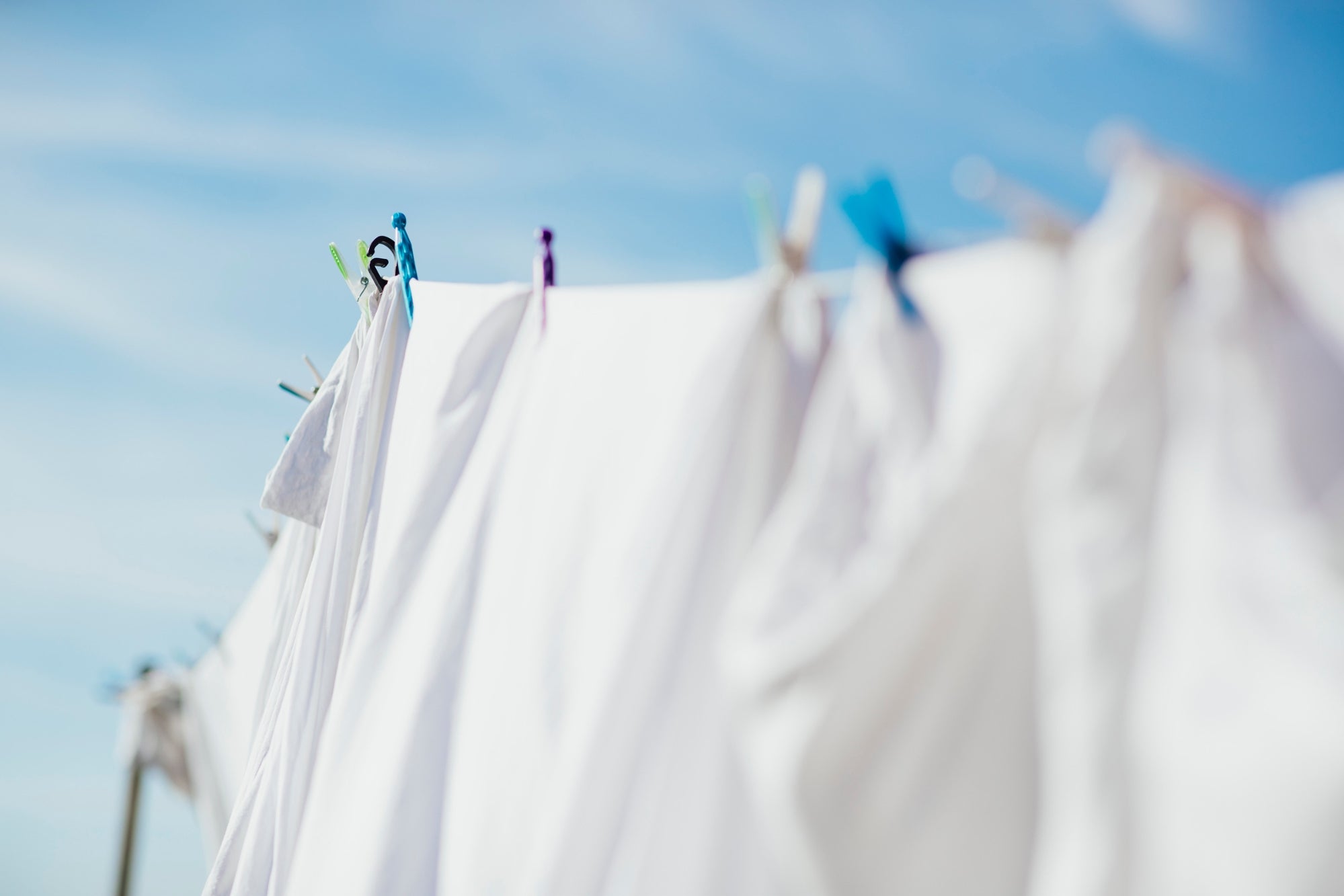
Make your own Fabric Softener & Avoid Nasty, Harmful Toxins
.
Using fabric softeners each time you wash your sheets is a big no-no!.
Fabric softeners coat the fabrics fibres and reduce the fabrics air permeability, leaving behind a film that can start to feel heavy and slimy. Not to mention the harmful effects they can have on your family’s health.
Commercial in-wash fabric softeners and heat-activated dryer sheets can pack a powerful combination of chemicals that can harm your health, damage the environment and pollute the air, inside and outside your home.
Here’s why.
Fabric Softeners are generally designed to prevent static, help with wrinkles, add a scent and make the materials feel softer. They achieve these goals by covering the clothes in a thin layer of film that is designed to stay on the fabric to help the scent stay there while they’re being worn. They are also very expensive, and actually a waste of your money.
A chemical classified as a phthalate is what helps the fabric softener ‘stick’ to the fabric during the washing process.
Every time that item of clothes or towels or sheets are washed in these fabric softeners,
that layer is added to, and gets thicker over time. Many parts of your washing machine and the pipes also receive a coating of this fabric softener.
Towels and athletic clothes lose their absorbency, and will become impossible to rid of bad smells. This layer of fabric softener need to be removed entirely before they can ever really be clean and for towels to regain their absorbency.
The most worrisome preservatives in fabric softeners include the potent skin allergen methylisothiazolinone, and glutaral, known to trigger asthma and skin allergies. Glutaral, or glutaraldehyde, is also toxic to marine life. :(
Among artificial colors, D&C violet 2 has been linked to cancer.
According to a study by Ashley Iredale, a whitegoods and laundry expert at consumer advocacy group CHOICE, we are strongly advised against using fabric softener, but especially on towels, cloth nappies and children's clothing.
But the harm doesn’t end there. Fabric softeners are packaged in plastic bottles or pouches, that often go unrecycled, contributing to our growing plastic pollution problem.
Commercial in-wash fabric softeners and heat-activated dryer sheets can pack a powerful combination of chemicals that can harm your health, damage the environment and pollute the air, inside and outside your home.
If you still love how softeners make your clothes feel, don't despair - this fabric softener-in-a-jar is easy to make, low cost and biodegradable.
You will need:
2 cups of Epsom salts
20-30 drops of your favourite essential oil
(Lavender or Eucalyptus Oils are both fantastic in the laundry)
1/2 cup baking soda
A container with a tightly fitting lid
Directions:
Mix together the Epsom salts and essential oil first, then add the baking soda.
Mix well until all combined and pour into a container
(like a wide-necked, screw top or vacuum hinge jar).
Label the jar, especially if you plan on doing a few with different scents.
Use 2-3 tablespoons each load, during the rinse cycle.
Top Loaders - Add directly into rinse cycle water.
Front Loaders - Add into the fabric softener tray.
Protect your health, the planet, and your valuable investments by switching to either a natural alternative like the recipe above, wool dryer balls, or just the sunshine.
Other articles:
Quick links
Shop
Cotton Quilt Covers
Cotton Bed Sheets
Cotton Pillowcases
Ivy Linen Quilt Covers
Ivy Linen Bed Sheets
Ivy Linen Pillowcases
Cushion Covers
Bundles & Sets
Gift Cards
Blog
About Beddie
Customer Care
Sizing
Shipping & Returns
Terms & Conditions
Privacy Policy
Refund policy
Terms of Service
